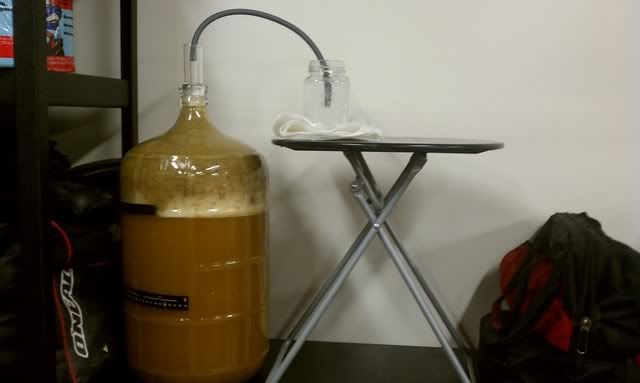All krausens look different, even using the same yeast on different batches.
The amount of krausen can vary for whatever reason, it can come quick and depart quickly or it can linger long after fermentation is complete,
and it all be normal.
There is nothing "typical" in brewing...
every fermentation is different, and should not be used to compare one with another...you can't do that.
No two fermentations are ever exactly the same.
When we are dealing with living creatures, there is a wild card factor in play..Just like with other animals, including humans...No two behave the same.
You can split a batch in half put them in 2 identical carboys, and pitch equal amounts of yeast from the same starter...and have them act completely differently...for some reason on a subatomic level...think about it...yeasties are small...1 degree difference in temp to us, could be a 50 degree difference to them...one fermenter can be a couple degrees warmer because it's closer to a vent all the way across the room and the yeasties take off...
Someone, Grinder I think posted a pic once of 2 carboys touching each other, and one one of the carboys the krausen had formed only on the side that touched the other carboy...probably reacting to the heat of the first fermentation....but it was like symbiotic or something...
With living micro-organisms there is always a wildcard factor in play...and yet the yeast rarely lets us down. So it is best just to rdwhahb and trust that they know to what they are doing. It sounds like you are brewing by a calendar, or instructions and not by what your beer is really doing, the problem is that yeast don't know how to read so they seldom follow their scripts. They dance to their own tune and its seldom 4 x 4 Time.

Don't assume the worst with the yeast, realize that they've been making beer since long before our great great great grandfather copped his first buzz from a 40 of mickey's out back of the highschool, so they are the experts.
Yeasts are like teenagers, swmbos, and humans in general, they have their own individual way of doing things.
And worrying because it's not happening how fast or slow you think it should be is really not worth the energy.
It may not be
what you expected it to be but that doesn't mean anything's wrong.
I find that brewing is a lot more stress free if I don't compare one batch to another. I subscribe to the I trust the yeast club. They've never let me down. But I don't try to understand them...
Relax. There is nothing wrong at all.
But that's also why I say not to go by Krausen as a "sign of complete fermentation" either. The amount of krausen can vary for whatever reason, it can come quick and depart quickly or it can linger long after fermentation is complete, and it all be normal.
For example, I had a wit beer that I pitched bottle harvested Hoegaarden yeast on Dec. 26th, LAST YEAR that STILL had a 2" krausen on it three weeks later. I took a grav reading and it had reached terminal gravity, 1.010. So the beer was done, but the krausen still lingered. I finally gently swirled the beer to knock it down, and let it settle for another week before I bottled it. I'm not normally a fan of knocking them down, and usually let it do it naturally.
But some yeasts are low flocculating, and may have a difficult time. I figured since mine was bottle harvested, and I had pitched the starter at high krausen, maybe it was "genetically mutated" with the flocculation "gene" off or something. So I gently swirled it and let it fall.
I brewed another batch with another mason jars worth of that yeast several months later and had the same thing happen.
Beligan wits are notoriously long krausening.






